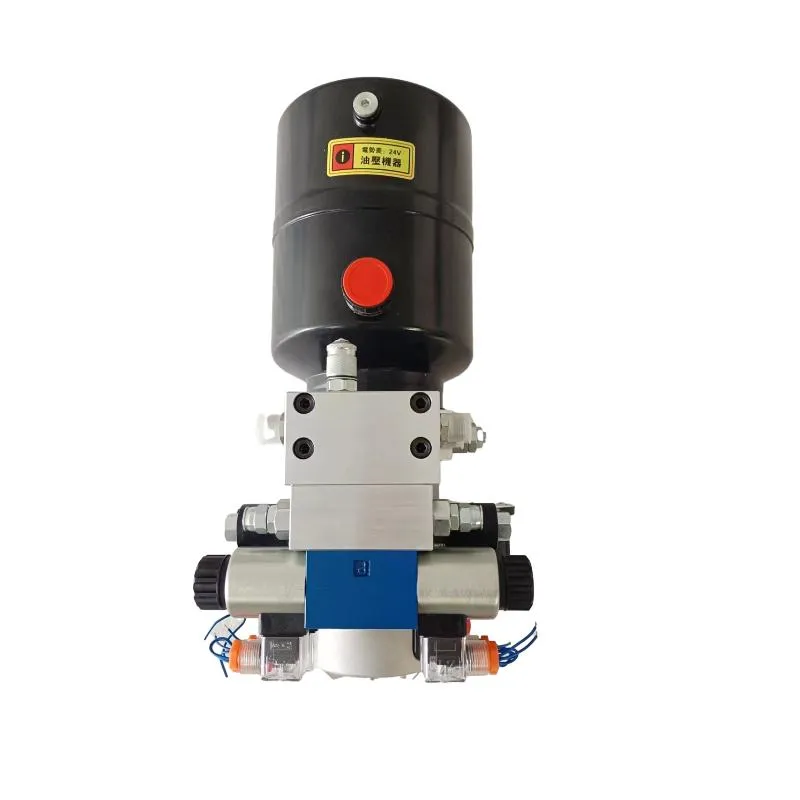Sep . 30, 2024 20:01 Back to list
Hydraulic Cylinder Gland Seal Solutions for Enhanced Performance and Durability
The Importance of Gland Seals in Hydraulic Cylinders
Hydraulic cylinders are crucial components in various industrial applications, from manufacturing machinery to construction equipment. These devices convert hydraulic energy into linear motion, and their efficient operation is pivotal for optimal performance. One essential element that ensures their efficiency is the gland seal. This article discusses the importance of gland seals in hydraulic cylinders, their functions, types, and considerations for selection.
Understanding Gland Seals
A gland seal is a component used in hydraulic cylinders to prevent fluid leakage from the end of the cylinder where the piston rod exits. It is usually installed in the gland or housing of the cylinder and is critical for maintaining the integrity of the hydraulic system. A well-designed gland seal contributes to the overall performance of hydraulic cylinders, ensuring that they operate smoothly and efficiently.
Functions of Gland Seals
1. Fluid Containment The primary function of a gland seal is to contain hydraulic fluid within the cylinder. Any loss of fluid can lead to decreased performance, inefficient operation, and increased wear on the system.
2. Pressure Retention Gland seals help maintain hydraulic pressure within the cylinder. This is vital for the cylinder to function effectively and generate the required force. A reliable seal prevents pressure drop, ensuring that the hydraulic system operates as intended.
3. Protection from Contaminants Gland seals protect the internal components of the hydraulic cylinder from external contaminants such as dust, dirt, and moisture. Contaminants can cause significant damage to the internal surfaces, leading to premature wear and failure.
4. Minimizing Friction A properly functioning gland seal reduces friction between the piston rod and the cylinder. This minimization of friction is essential for smooth operation and prolongs the lifespan of the components involved.
Types of Gland Seals
There are various types of gland seals designed for different applications and environments
. The most common types include1. O-Ring Seals O-rings are versatile seals made from various elastomers. They are widely used due to their simplicity and reliability. O-rings provide excellent sealing capabilities and are resistant to many hydraulic fluids.
gland seal in hydraulic cylinder product

2. U-Cup Seals U-cup seals are commonly used in hydraulic cylinders for their ability to provide a robust sealing solution. Their design allows them to accommodate radial movement while maintaining a tight seal.
3. Lip Seals Lip seals consist of a flexible lip that presses against the piston rod or cylinder wall. They are effective in preventing fluid leakage and are often used in high-speed applications.
4. Composite Seals Composite seals are designed using multiple materials to enhance durability and resistance to wear. They are ideal for applications that face extreme conditions.
Considerations for Selection
When selecting gland seals for hydraulic cylinders, several factors must be taken into account
1. Application Requirements The specific conditions of the application, such as pressure, temperature, and fluid type, should guide the selection process. Seals must be compatible with the hydraulic fluid used.
2. Material Choice The material of the gland seal significantly affects its performance and longevity. Common materials include nitrile, polyurethane, and fluorocarbon, each with distinct properties suitable for various environments.
3. Installation and Maintenance Proper installation is crucial to the effectiveness of gland seals. Regular maintenance checks can help identify wear and tear, ensuring timely replacement to avoid leaks or failures.
4. Cost and Availability While the initial cost of the seal is important, considering the long-term benefits of high-quality seals can save costs associated with downtime and repairs.
Conclusion
Gland seals play a vital role in the functionality and efficiency of hydraulic cylinders. By preventing fluid leakage, protecting against contaminants, and retaining pressure, they ensure that hydraulic systems operate smoothly and reliably. Understanding the types of seals available and the factors influencing their selection is essential for optimizing hydraulic cylinder performance. Investing in high-quality gland seals can significantly enhance the longevity and reliability of hydraulic equipment, ultimately leading to improved operational efficiency in numerous applications.
-
Efficient & Reliable Double Acting Power Unit | Hydraulic Solutions
NewsAug.23,2025
-
1.5 Ton Turbocharged Cylinder 80/95-40/60-35-124 | High Performance
NewsAug.22,2025
-
High-Performance Fork Lift Hydraulic Power Units
NewsAug.21,2025
-
High-Quality Set of 50/60-45-290 471 - Precision Parts
NewsAug.19,2025
-
1.5 Ton Lifting Cylinder-Hebei Shenghan|Heavy-Duty Lifting, Precision Engineering
NewsAug.18,2025
-
1.5 Ton Lifting Cylinder-Hebei Shenghan|Precision Hydraulic Solutions&Industrial Lifting
NewsAug.18,2025
